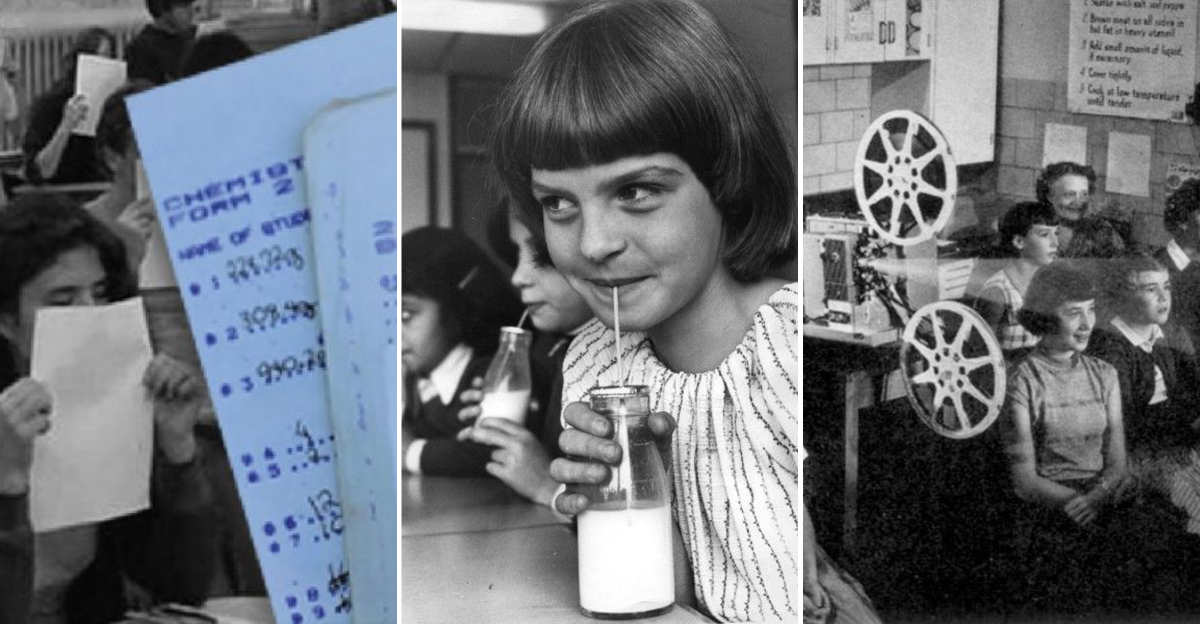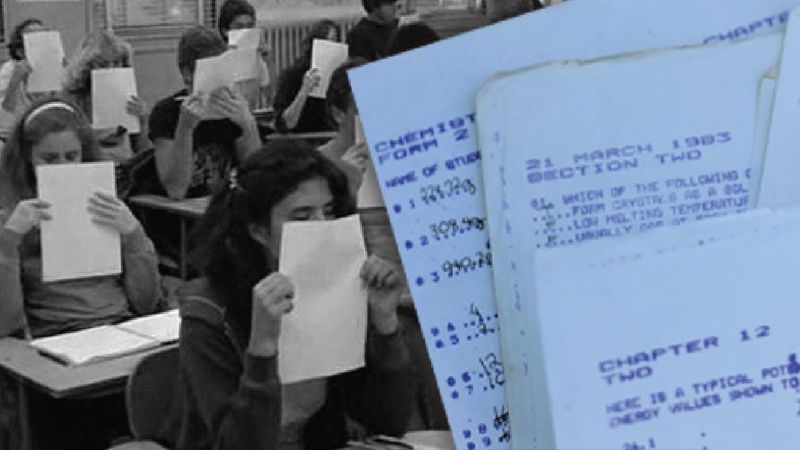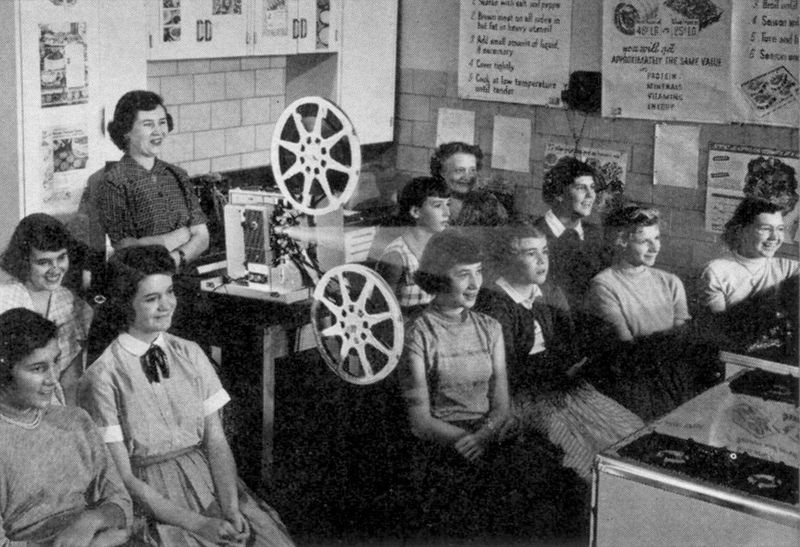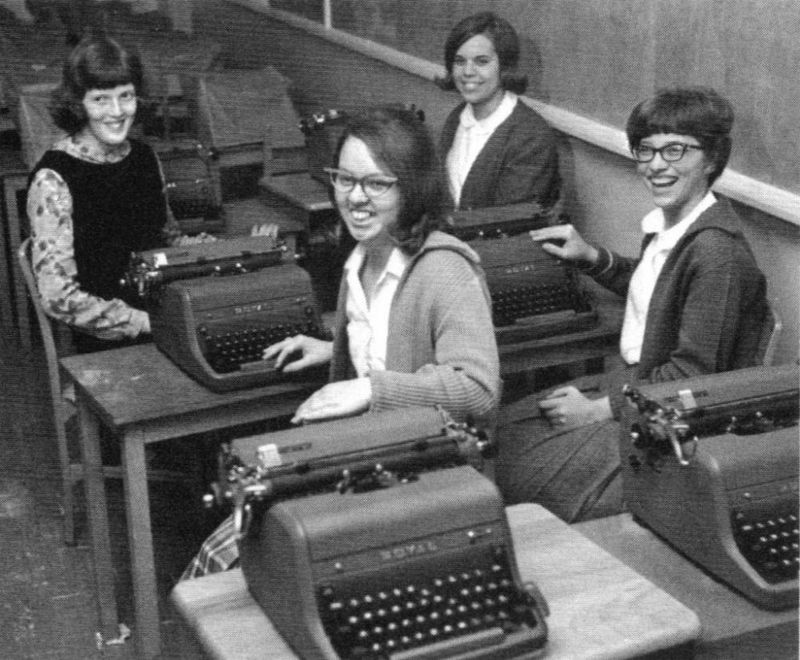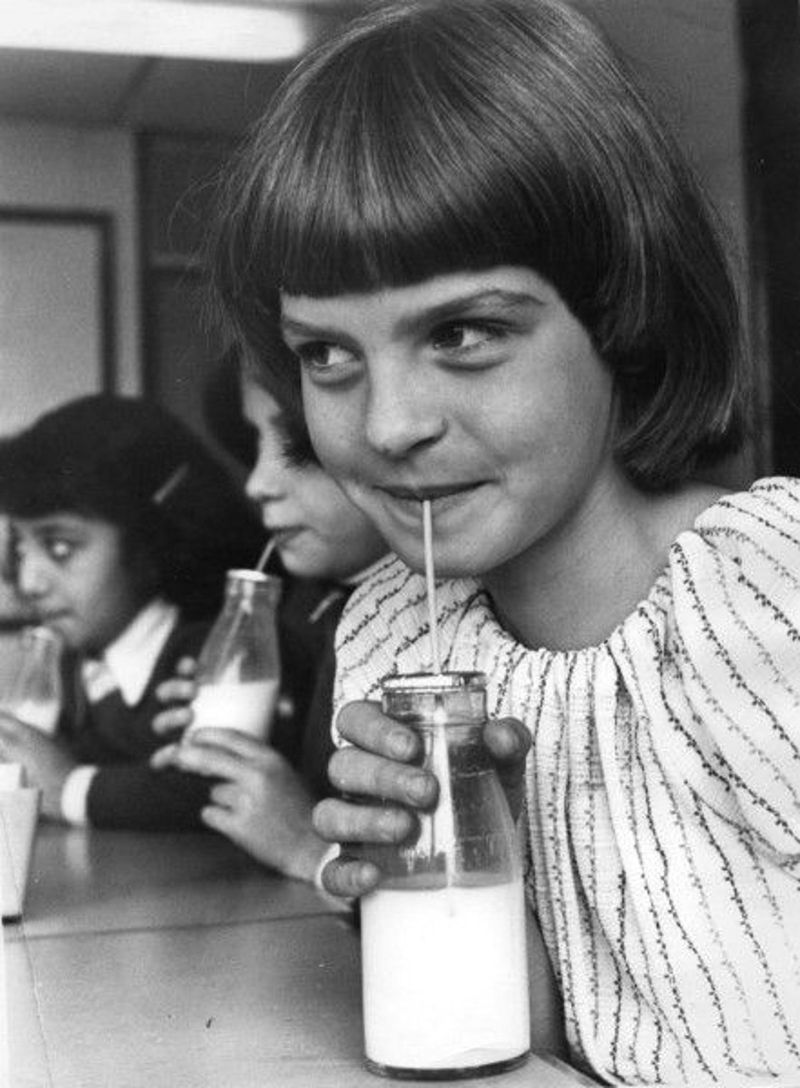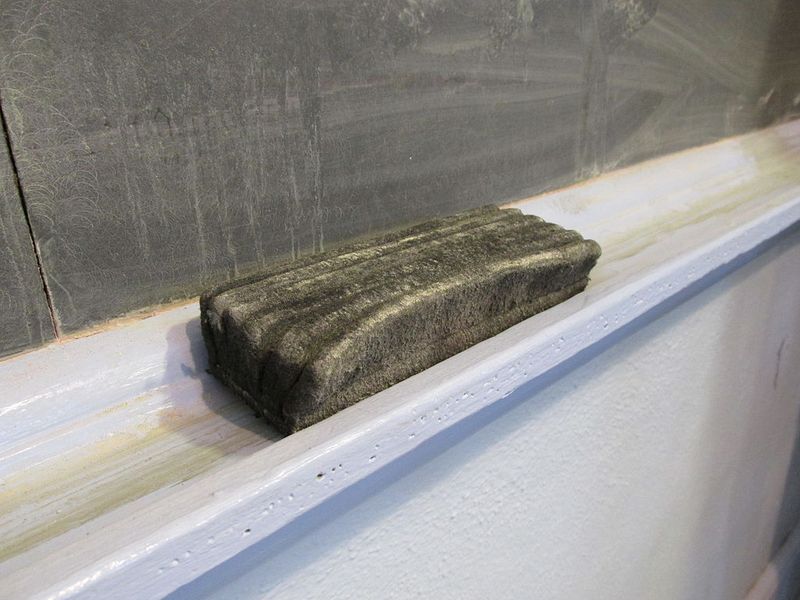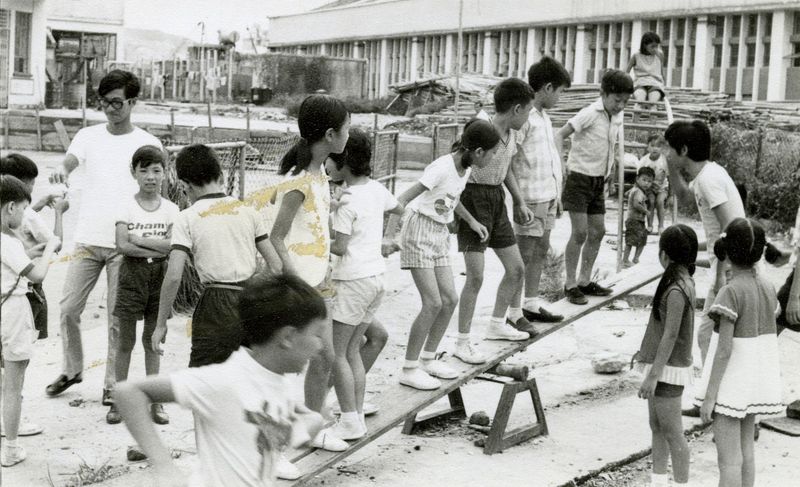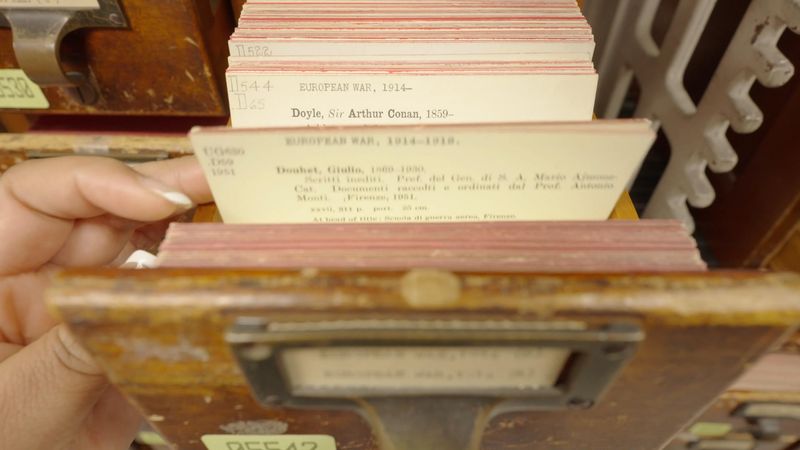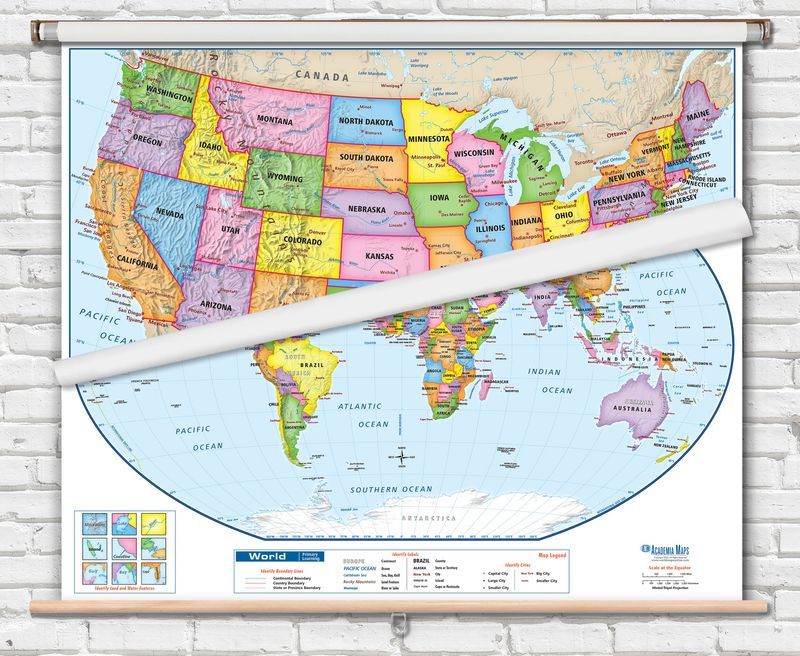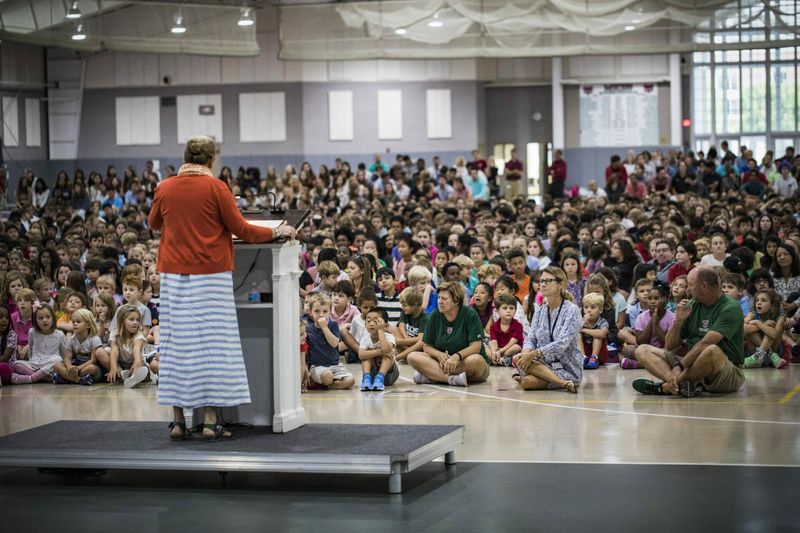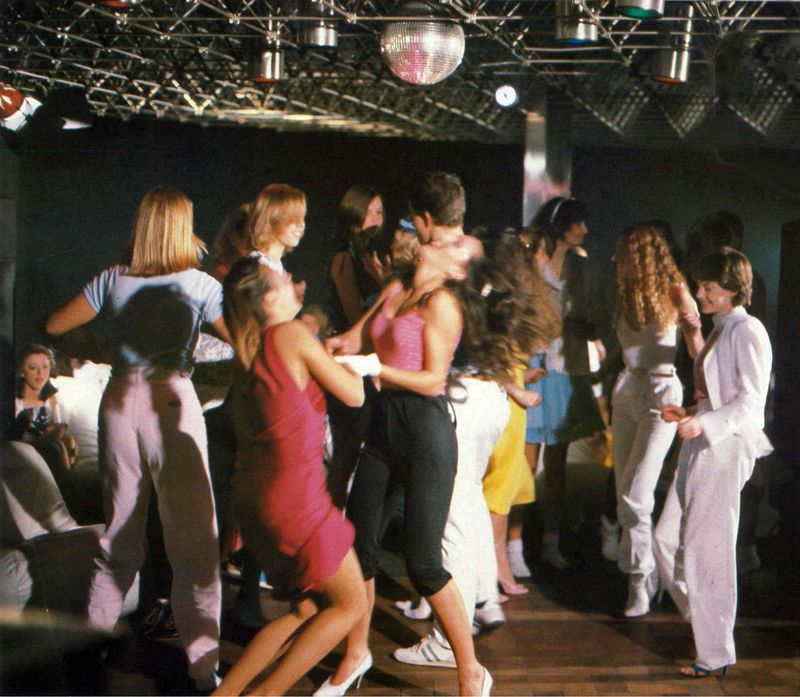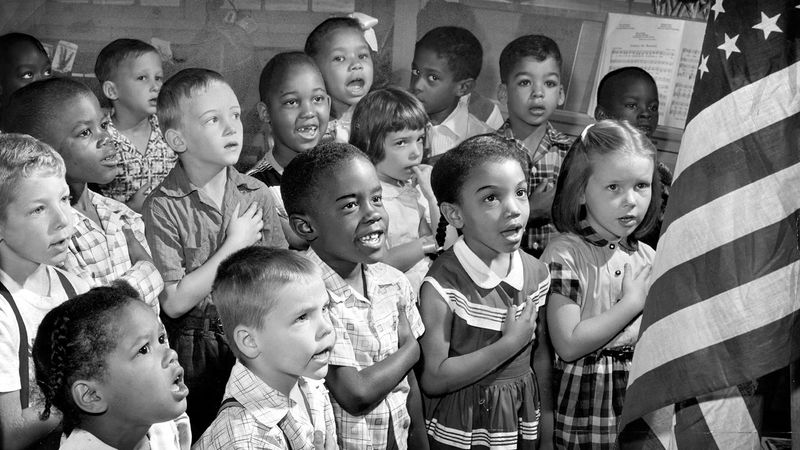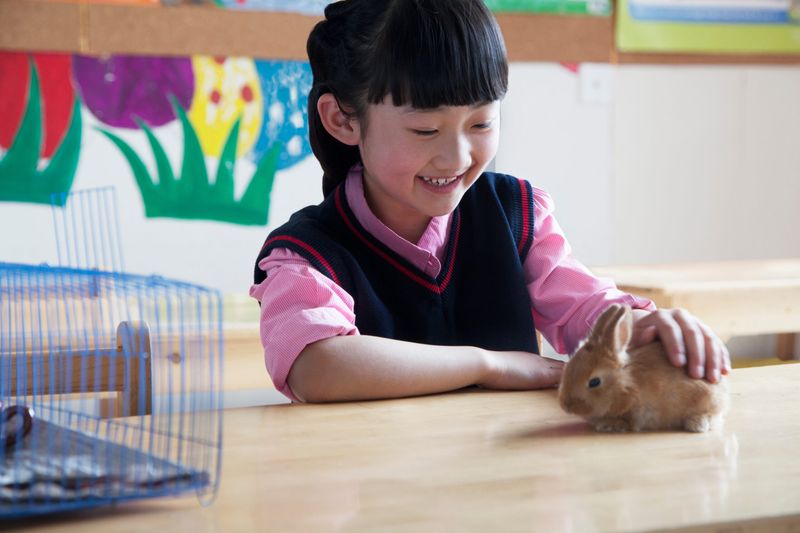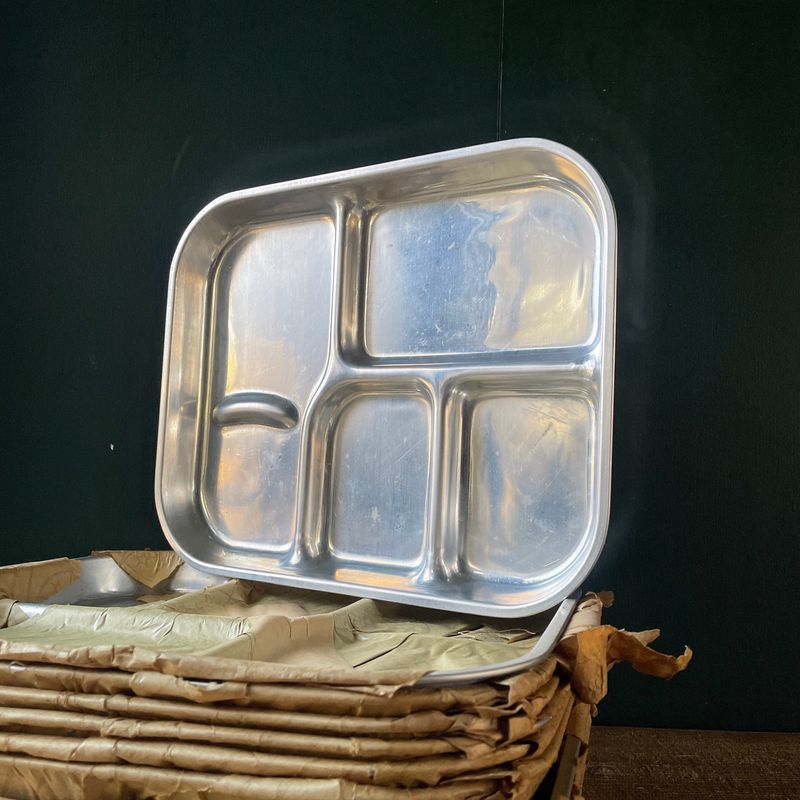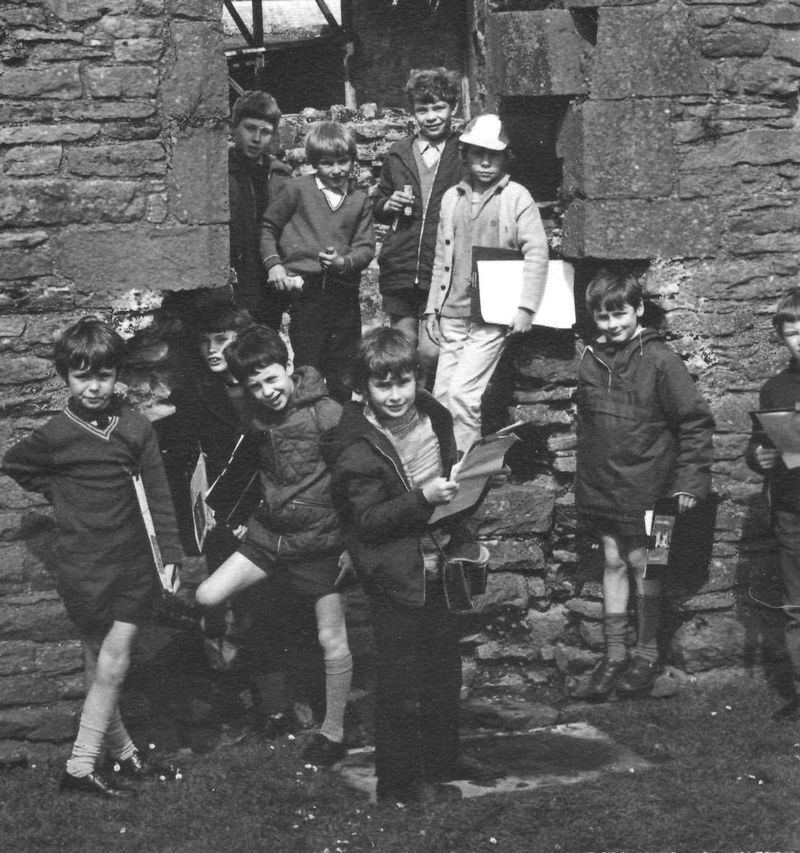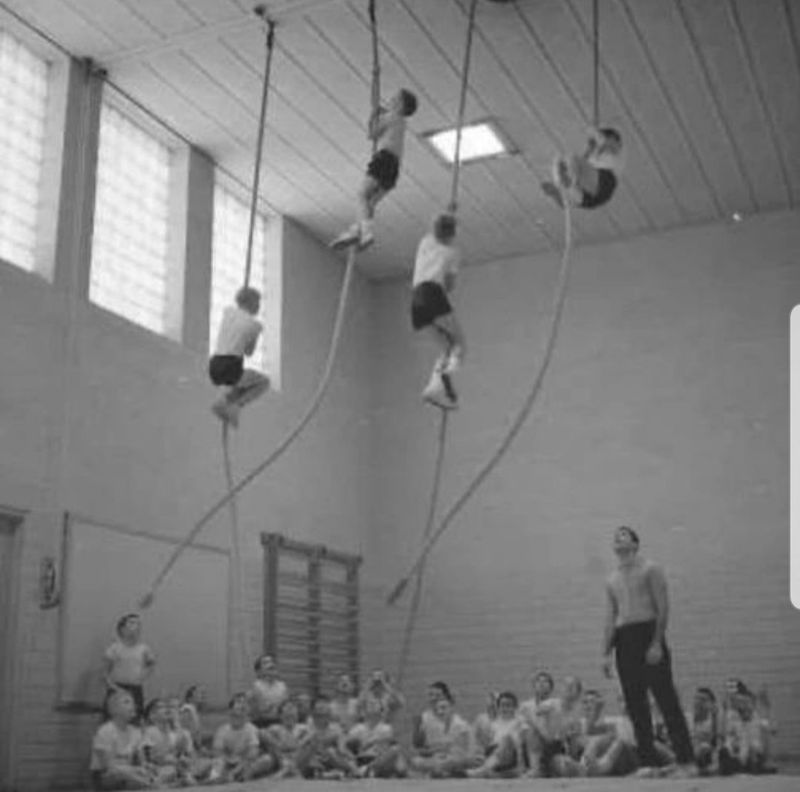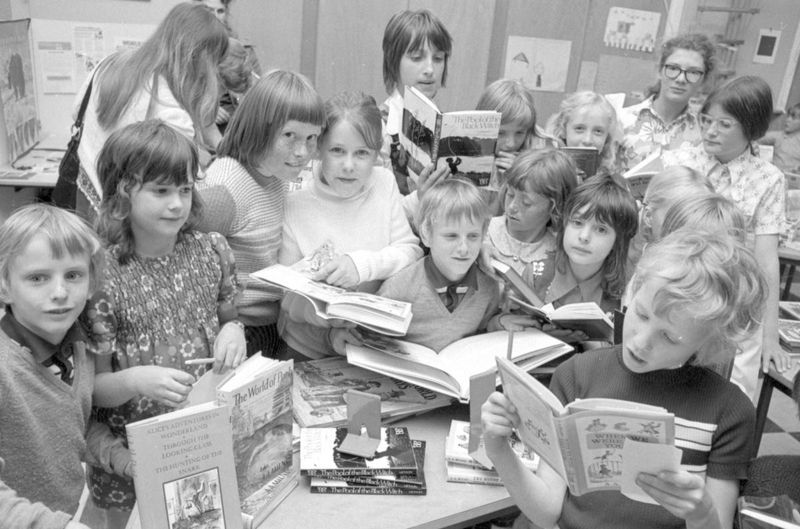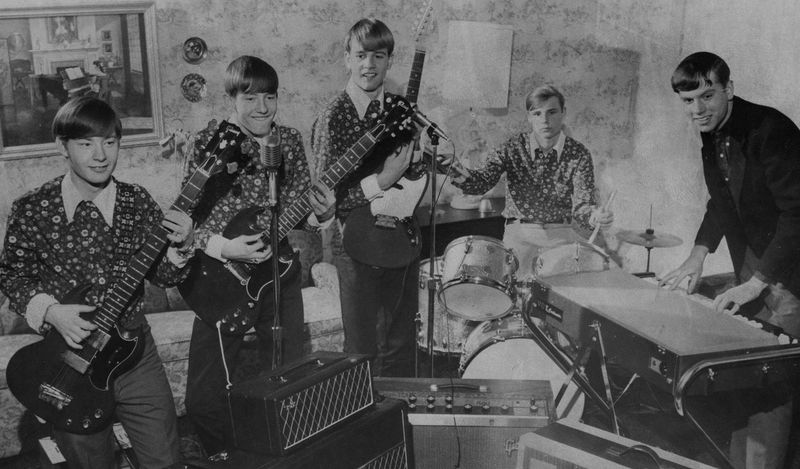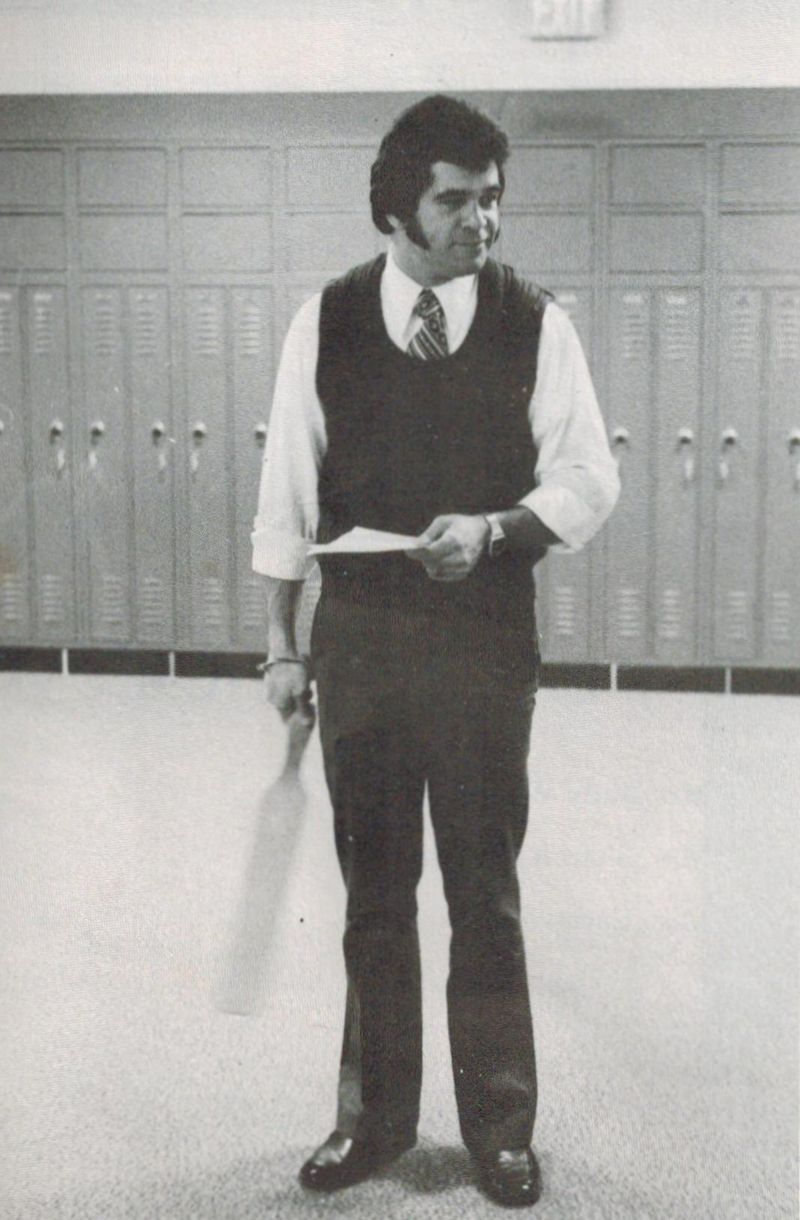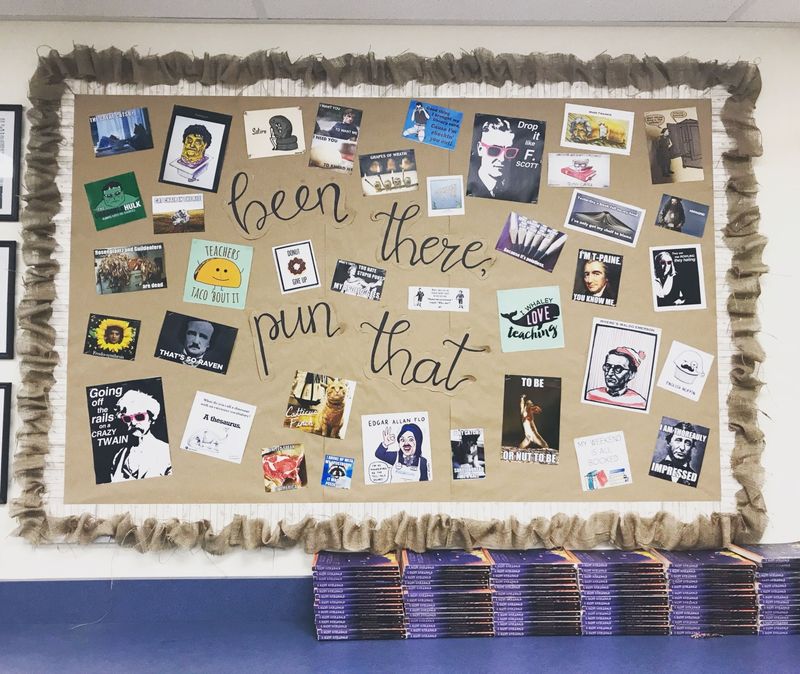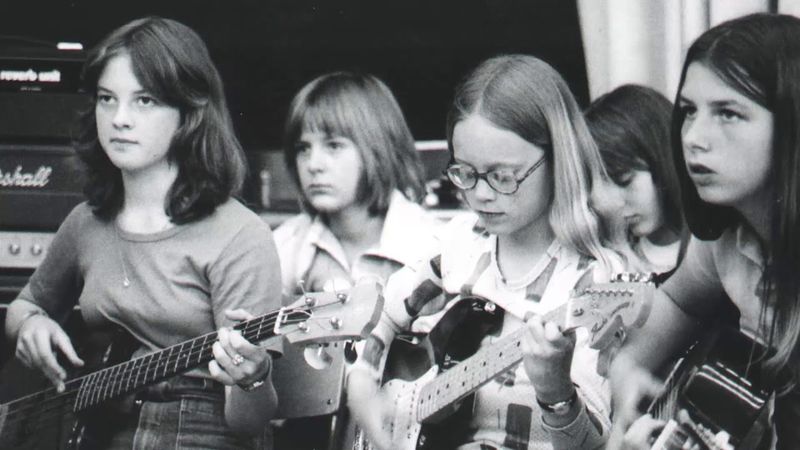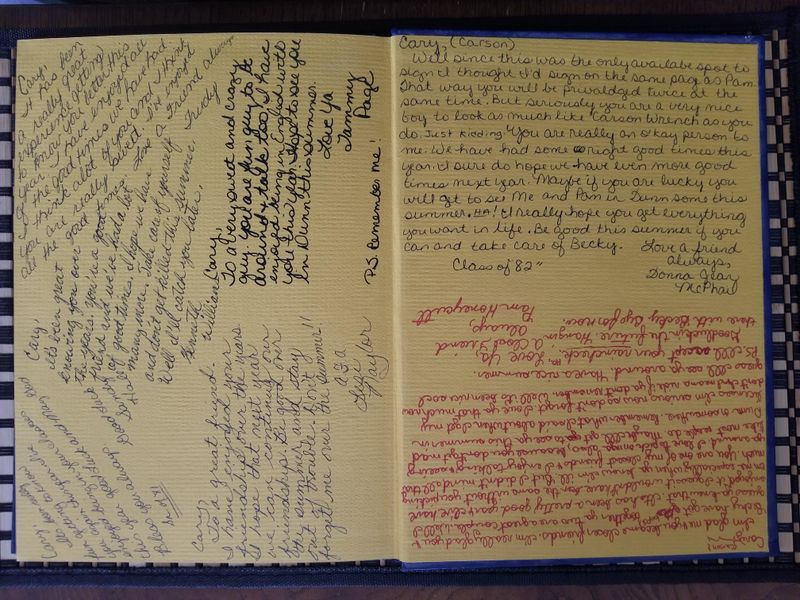Dive into a rich tapestry of school memories that only Baby Boomers can truly appreciate.
From the smell of freshly printed ditto sheets to the joy of watching educational filmstrips, this journey through the past will evoke a sense of nostalgia and warmth.
Join us in exploring 27 unique facets of school life from a bygone era, each one a precious gem that captures the essence of growing up during a time when life was simpler and technology was just beginning to emerge.
Whether you recall these memories with fondness or curiosity, they paint a vivid picture of a shared past.
1. Ditto Machine Smell
The unmistakable aroma of freshly printed ditto sheets permeating the classroom is a memory etched in the minds of Baby Boomers. These machines, with their distinctive blue ink, were the backbone of classroom handouts.
Students would eagerly wait as teachers cranked out copies, filling the room with a unique scent.
The smell is often described as a mix of alcohol and ink, a fragrance that signified new lessons and assignments. Many recall the excitement of being handed a fresh sheet, pressing it to their noses for that initial whiff. It’s a sensory memory that connects generations.
2. Filmstrips in Class
In an era before digital media, filmstrips were a staple in educational settings. Teachers would dim the lights, and the click of the projector signaled the start of a visual learning journey. These filmstrips often featured educational topics, from science to history, bringing subjects to life.
Students relished these occasional breaks from textbooks, eyes fixed on the screen as each frame clicked by. The anticipation of a new slide kept attention high, and the accompanying audio added to the experience. It was a multimedia adventure that brought a touch of excitement to school days.
3. Manual Typewriters
Typing classes on manual typewriters were a rite of passage for many Baby Boomers. The clatter of keys and the ding of the carriage return were sounds that filled the classroom. Mastering the keyboard required skill, as each key needed a firm press to register.
These classes taught invaluable skills, preparing students for the workforce with a focus on speed and accuracy. The satisfaction of creating a perfectly typed document was immense.
Typing tests were common, with students striving to reach high words-per-minute scores. This hands-on learning left a lasting impression, fostering both precision and discipline.
4. Slide Rules
Before calculators became widespread, slide rules were the tool of choice for mathematical computations. These analog devices required a deep understanding of mathematics, as students manually calculated complex equations. Mastery of the slide rule was a source of pride, demonstrating both skill and intellect.
Slide rules were often tucked into book bags, a vital part of a student’s toolkit. Teachers emphasized accuracy and comprehension, guiding students through intricate calculations.
Though calculators eventually replaced them, the slide rule remains a symbol of an era when mental math reigned supreme. Its legacy is one of precision and knowledge.
5. Milk in Glass Bottles
Lunches in school cafeterias often featured milk served in glass bottles. These bottles were a hallmark of the Baby Boomer era, providing a sense of freshness and quality. Students would line up to grab their bottle, complete with a cardboard stopper.
The clinking of glass in the cafeteria is a sound remembered fondly. Drinking milk from these bottles felt special, a daily ritual that complemented meals.
The return of empty bottles was part of the routine, emphasizing responsibility and recycling even then. This simple pleasure is a cherished memory, evoking a time of innocence and simplicity.
6. Chalkboards and Erasers
Chalkboards were a central feature of every classroom, serving as the main teaching tool. Teachers would fill them with notes, diagrams, and lessons, erasing and starting anew throughout the day. The sound of chalk on the board is a defining memory.
Students often had the task of cleaning erasers, clapping them together to remove dust. This chore, though messy, was a break from the usual routine.
The satisfaction of a clean slate ready for the next lesson is a feeling many recall. Chalkboards symbolized learning, creativity, and the endless possibilities each school day brought.
7. Schoolyard Games
Recess was a time for schoolyard games that fostered camaraderie and physical activity. Hopscotch, jump rope, and tag were among the favorites, offering a break from academic routines. These games encouraged teamwork, strategy, and healthy competition among students.
Simple yet engaging, these activities were a vital part of the school experience. The joy of running, jumping, and laughing with friends created lasting bonds.
Even as games evolved over time, the essence of play remained unchanged. Schoolyards were lively places where creativity thrived, shaping memorable experiences that defined childhood for Baby Boomers.
8. Handwritten Report Cards
Handwritten report cards were a tangible connection between school and home. Teachers meticulously filled them out, providing a detailed account of a student’s academic progress and behavior. Each card was personal, reflecting the teacher’s observations and insights.
Receiving a report card was an event, often met with anticipation or apprehension. Parents would review the grades carefully, discussing successes and areas for improvement.
These cards were more than mere records; they were a communication tool fostering engagement between educators and families. The personal touch of handwritten feedback made them cherished keepsakes, preserving a snapshot of educational history.
9. Library Card Catalogs
Before digital databases, library card catalogs were the gateway to knowledge. These wooden cabinets held a treasure trove of information, each card detailing the location of books within the library. Navigating the catalog was a skill, requiring patience and curiosity.
Students would spend time flipping through cards, deciphering the Dewey Decimal System. The tactile experience of handling cards and discovering new books was both educational and exciting.
Libraries were sanctuaries of learning, and card catalogs were the keys to unlocking their vast resources. This analog system fostered a love for reading and research among Baby Boomers.
10. Classroom Maps
Pull-down maps were an essential classroom feature, offering visual context to geography lessons. Teachers would unfurl these large, colorful maps, guiding students on journeys around the world. The maps brought distant lands into focus, enhancing learning through vivid imagery.
Students would often take turns locating countries, capitals, and geographical features, fostering a sense of exploration.
These maps were not just educational tools; they were windows to the world, sparking curiosity and wonder. The visual journey they provided remains a cherished memory, reminding Baby Boomers of the expansive nature of learning and the world beyond the classroom.
11. Home Economics Classes
Home economics classes provided practical skills that extended beyond the classroom. Students learned to cook, sew, and manage household tasks, equipping them with essential life skills. These classes emphasized self-sufficiency and creativity, laying the foundation for responsible adulthood.
Projects often involved planning meals, budgeting, and crafting items, fostering a sense of accomplishment. The hands-on experience allowed students to experiment and express themselves.
Many Baby Boomers fondly recall these lessons, as they offered a break from traditional academics and a chance to develop talents. Home economics was an invaluable part of education, blending practicality with creativity.
12. School Assemblies
School assemblies were a gathering point for the entire student body, providing a sense of community and shared experience. Held in gyms or auditoriums, these events featured speeches, announcements, and performances that connected students and staff.
Assemblies celebrated achievements, shared important news, and sometimes included entertainment or guest speakers. They were a break from routine, fostering school spirit and camaraderie.
The anticipation of these gatherings created a buzz throughout the school. Assemblies were more than just meetings; they were moments of unity and celebration, leaving lasting impressions on students and reinforcing their sense of belonging.
13. Penmanship Practice
Penmanship practice was a cornerstone of early education, with students striving to perfect their cursive writing. Using fountain pens or pencils, they would meticulously form letters, learning the art of beautiful handwriting. This skill was both an academic requirement and a personal achievement.
Teachers emphasized the importance of neat and legible writing, often grading students on their penmanship. The practice involved repetition and patience, instilling discipline and attention to detail.
Many Baby Boomers remember the satisfaction of mastering elegant script, a skill that has become less common in today’s digital age. Penmanship remains a cherished tradition, reflecting a bygone era.
14. School Dance Parties
School dances were vibrant social events, offering students a chance to dress up and enjoy music with friends. Held in school gyms or halls, these dances were highlights of the academic calendar, filled with excitement and anticipation.
From rock ‘n’ roll to classic ballads, the music set the tone for memorable evenings. Students would spend weeks preparing, selecting outfits and practicing dance moves. The sense of community and joy these events fostered was unmatched.
For many Baby Boomers, school dances were milestones of adolescence, providing opportunities for socializing and creating cherished memories with classmates.
15. Pledge of Allegiance
Reciting the Pledge of Allegiance was a daily ritual in many schools, instilling a sense of patriotism and unity. Students would stand, place their hands over their hearts, and recite the pledge in unison, a practice that began each school day.
This tradition was a moment of reflection and respect, bringing the classroom together. It served as a reminder of shared values and national identity.
For Baby Boomers, this daily routine is a poignant memory, reflecting a time when civic pride was a central part of education. The Pledge of Allegiance remains a symbol of unity and tradition.
16. Classroom Pet Projects
Classroom pets were a delightful addition to the learning environment, teaching students about responsibility and nature. Whether it was a hamster, fish, or turtle, these pets became part of the school family, cared for by students.
The responsibility of feeding and cleaning up after the animal was shared, fostering teamwork and empathy. Observing the pet’s behavior provided learning opportunities, enhancing science lessons.
For many Baby Boomers, classroom pets were beloved companions, offering joy and engagement. These projects nurtured a sense of care and curiosity, leaving lasting impressions and warm memories of school days.
17. Cafeteria Lunch Trays
School cafeterias were bustling hubs of activity, where students gathered to enjoy lunch and socialize. The iconic lunch trays, often colorful and compartmentalized, were a staple of the dining experience.
Meals varied from school to school, but the shared experience of cafeteria dining fostered camaraderie. Students would trade snacks, share stories, and enjoy meals together, creating a sense of community.
For Baby Boomers, these lunches were more than just nourishment; they were a daily opportunity to connect with peers. The nostalgia of cafeteria trays evokes memories of friendship and the simple joys of school life.
18. Field Trips
Field trips were eagerly anticipated adventures, offering a break from the classroom and a chance to explore new places. Whether visiting a museum, zoo, or historical site, these trips provided hands-on learning experiences.
The excitement of boarding the bus and embarking on a journey was palpable. Students absorbed knowledge in a dynamic setting, with teachers guiding them through exhibits and presentations.
Field trips fostered a love for exploration and discovery, enhancing classroom lessons. For many Baby Boomers, these excursions are cherished memories, symbolizing the joy of learning beyond school walls and the thrill of adventure.
19. School Bell Rings
The ringing of the school bell was a defining sound, marking the start and end of classes. This mechanical alarm regulated the school day, signaling transitions and keeping the schedule on track.
Students eagerly awaited the bell, whether anticipating a favorite class or the freedom of recess. The sound echoed through hallways, a constant presence in daily life.
For Baby Boomers, the school bell is a symbol of structured time, discipline, and the rhythm of academic life. Its familiar ring evokes nostalgia, reminding them of the unique cadence that punctuated their educational journey.
20. Textbook Covers
Covering textbooks with decorative paper was a common practice, allowing students to personalize their school materials. Brown paper bags or colorful wraps were often used, turning plain books into unique expressions of creativity.
Students would carefully fold and tape the covers, sometimes adding doodles or stickers. This ritual protected the books and provided an opportunity for artistic expression.
For Baby Boomers, these covers were a canvas for individuality, reflecting personal style and interests. The process of covering textbooks is a nostalgic memory, symbolizing the blend of practicality and creativity that characterized school life.
21. Gym Class Activities
Gym class was a lively part of the school day, offering students a chance to engage in physical activity and sportsmanship. Activities ranged from dodgeball to relay races, fostering teamwork and athletic skills.
The gym’s echoing sounds of bouncing balls and cheering students created an energetic atmosphere. Physical education teachers encouraged participation, emphasizing fitness and fair play.
For Baby Boomers, gym class was a highlight, providing a break from academics and an outlet for energy. These activities promoted health and camaraderie, creating lasting memories of youthful exuberance and the joy of movement.
22. Book Fairs
Book fairs were a magical event, transforming school libraries into treasure troves of literature. Tables overflowing with colorful books invited students to explore new stories and genres.
Excitement filled the air as students browsed, selecting books to take home. These fairs fostered a love for reading and discovery, offering access to a world of imagination.
For Baby Boomers, book fairs were memorable occasions, where the joy of finding a new favorite book was unparalleled. This tradition promoted literacy and curiosity, leaving an indelible mark on the educational experience and encouraging a lifelong love for books.
23. School Band Performances
School band performances were showcases of musical talent and dedication. Students practiced diligently, coming together to perform in concerts that celebrated their hard work and creativity.
These performances, held in auditoriums or gyms, were attended by proud parents and peers. The sound of instruments in harmony created a festive atmosphere, filling the space with music.
For Baby Boomers, participating in the school band was a cherished part of their education, fostering teamwork and artistic expression. Band performances were more than just events; they were milestones of achievement and a celebration of musical passion.
24. Principal’s Office Visit
Visiting the principal’s office was a significant event, often associated with both apprehension and importance. Whether for commendation or discipline, the visit was a memorable moment in a student’s life.
The atmosphere outside the office was tense, with students reflecting on their actions or anticipating praise. The principal’s role as both authority figure and mentor added weight to the encounter.
For Baby Boomers, these visits are unforgettable, symbolizing authority and the lessons learned from authority figures. The principal’s office was a place of growth, where students learned accountability, respect, and the value of guidance.
25. Classroom Bulletin Boards
Bulletin boards were vibrant displays of creativity and information, brightening up classrooms with colorful decorations. These boards showcased student artwork, announcements, and seasonal themes, adding personality to the learning environment.
Teachers and students collaborated on designs, fostering a sense of pride and ownership. Bulletin boards were ever-changing, reflecting the dynamic nature of the school year.
For Baby Boomers, these displays were a cherished part of classroom life, providing a visual feast of creativity and community. Bulletin boards symbolized the collaborative spirit of education, highlighting achievements and fostering a sense of belonging.
26. Singing School Songs
Singing school songs was a tradition that fostered school spirit and unity. These anthems were sung during assemblies, sports events, and special occasions, bringing the student body together in harmony.
The lyrics often celebrated the school’s values and history, instilling pride among students. Singing together created a sense of belonging and shared identity.
For Baby Boomers, these songs are nostalgic reminders of camaraderie and the collective voice of their school community. School songs were more than just melodies; they were an expression of unity and the spirit that defined the school experience.
27. Yearbook Signing
Yearbook signing was a beloved tradition, marking the end of the school year with personal messages and autographs. Students would exchange yearbooks, penning notes of friendship, memories, and good wishes.
This exchange was an emotional moment, capturing the essence of school relationships and shared experiences. The yearbook became a keepsake, preserving the bonds and stories of the academic year.
For Baby Boomers, signing yearbooks is a nostalgic memory, symbolizing the enduring connections and the passage of time. The heartfelt messages remain cherished reminders of the friendships and the journey through school life.
